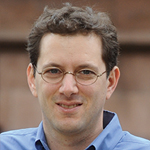PRESIDENT’S LETTER
I am writing this column after meeting new and returning students full of infectious energy and optimism. I feel less like a rookie at the outset of my third year, which means less time playing catch–up, and have spent the last few months thinking about a framework for planning the next decade at Wesleyan—an exercise in optimism.
Of course, we are still feeling the reverberations of the economic crisis that has shaken all colleges and universities. Although our endowment has begun to recover its value, we must deal with short– and long–term fiscal issues made more apparent during this crisis. We are having conversations about the budget with both the Budget Priorities Committee, which represents faculty, students, and staff, and with an ad hoc faculty committee to advise me on current budget matters. Our immediate task is to cut spending by an additional 2.5 percent. Although we are not out of the woods yet, I am confident that we can make the necessary cuts to balance the budget this year while protecting financial aid and the academic core.
Economic reverberations haven’t stopped us from making significant progress. I’ve taken the input I’ve received over the last two years from trustees, faculty, students, alumni, and staff, and combined that with my own sense of how we might build on what is most distinctive about the Wesleyan experience. For the last year or so I’ve talked about “seven initiative areas,” and I have woven those into a plan that charts a direction for our university over the next several years. I’ve also emphasized that we must develop the sustainability of our economic model—that means there won’t be any spending sprees in the coming decade. But there will be an ever greater effort to energize those elements most distinctive in the Wesleyan experience, create ongoing economic support for those elements, and develop effective ways of communicating to the world about them.
We will be having extensive conversations on campus and at alumni/parent meetings about the ideas I’ve posted online as “Preliminary Thoughts on Planning” at http://2020.blogs.wesleyan.edu/. I invite you to send in your feedback either by posting a public comment on the site or by clicking the e–mail link for a private reply. We will continue to revise our plans for the future until we have a framework we can use for developing our curriculum, recruiting students, allocating resources, and raising endowment support for the future.
Recently in Denver I started talking with alumni and parents about my thoughts on planning. We’ve been increasing our applications from this region, and there was a great turnout of alumni from the 1950s through last year. Standing out even among our talented alumni group are two of the state’s most interesting political leaders: Denver Mayor John Hickenlooper ’74 and U.S. Senator Michael Bennet ’87. And there are many other alumni engaged in public service. From art museums, to schools, to alternative energy—Wesleyan grads and their families are making a difference in public life in Denver as elsewhere.
Public life is front and center this fall on campus with the reopening of the old Scott Labs/Davenport facility as the Allbritton Center for the Study of Public Life—a great reason for optimism about the future. The building looks wonderful, and our team has done a remarkable job of combining the historical structure with the best technology to serve students and teachers. The building is also the home of the Shapiro Creative Writing Center and the Quantitative Analysis Center, two outstanding new avenues for our students to pursue their work at the highest level. The project came in as our greenest building, on time and under budget—a great sign for how we have to do things in this ecological and economic environment!
We are ready to move from crisis management to opportunity seeking. I look forward to engaging conversations on how we can build a Wesleyan for the future that will grow out of the finest accomplishments of our proud history. Please join in!

